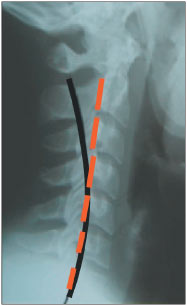Building Your Practice on a Strong Foundation
by Dr. Mark R. Payne D.C.
In keeping with this month’s focus on practice management and coaching, I wanted to take a slightly different twist with this article.
While I make no pretense at being a practice manager or coach, I have started and operated two successful practices in my career plus a couple of other successful businesses, and there is one principle which should be carved in stone. You can never have any measure of long term success unless you actually deliver a real and valuable service/product to your patient or client. Oh, sure, there are plenty of folks in every line of business who talk a great game, but never actually deliver very much of what they promise. Such businesses generally start out great but fade in the stretch. Practices which are built on little more than hype and patient motivation generally start to implode after a few years when the community realizes the doctor “just keeps you coming back for the money.” There’s just no staying power to any business that doesn’t honestly serve the best interests of its customers.
On the other hand, thousands of doctors all over the country are quietly doing their job, delivering what they promise, and serving the needs of their patients; and patients intuitively know who has their best interest at heart. With a bit of patient education, patients can understand the difference between short term relief and true correction. And, sometimes, with a little patience, they even come to understand the concept of prevention. But there’s one thing that patients always understand and that is objective results they can clearly see with their own eyes. There is nothing more powerful than when a patient sees and understands their problem at the beginning of care and then can clearly visualize their own improvement as care progresses.
It probably comes as no surprise that I believe a postural chiropractic paradigm has numerous advantages for both doctor and patient. At the same time, I realize and respect that many of you have a fundamentally different approach to practice. Where I might choose to concentrate on improving the biomechanical (structural) status of the patient, another doctor might focus on various parameters of patient function like range or quality of joint motion or enhanced ability to perform various activities of daily living.
Whenever we treat a patient, it is incumbent upon us to objectively document the results of our care. Obviously, some methods of documentation are apparent only to the doctor, such as improvement in palpated joint motion. Others, like X-Ray, or visual postural analysis, may be easily seen and understood by the patient as well. The degree to which patients can see and comprehend their problem and the results of your treatment will determine, in large part, the patient’s perceived value of your care and, consequently, the referral value of your services. It is here that a strong focus on posture rehabilitation can be a significant tool in building your practice. 
Figure 1: The PRE treatment film here clearly shows the patient’s loss of the normal cervical lordosis (the red dotted line) as compared to a more normal or optimum lordosis (the black solid line). Patients understand such simple, concrete demonstrations of their problems.
Doctors who focus on biomechanical correction have no problem educating patients as to the nature of their postural problems. These are problems which don’t require a sophisticated or trained eye to see. Once patients understand what their spine should look like (shown here with the black solid line), they can easily understand why they need to perform various rehab activities like exercise, extension traction, or lifestyle modifications to help their posture return to normal. Likewise, the clinical advantages of a structural practice paradigm are numerous as well. Unlike the small, single segment subluxations you learned about in chiropractic college, large scale, multi segmental postural misalignments can be easily and objectively identified, accurately measured, and effectively treated in the majority of cases.

Figure 2: The POST treatment film here clearly shows the patient’s lordosis returning to a more normal or optimum position. Patients can clearly see and understand results like these.
Including postural care brings patient benefits that simply can’t be achieved in any other way, as well. Simple, low tech methods of postural rehab, such as extension traction and reverse posture exercise, as were used on the patient above, have been shown to produce long term structural improvements, far exceeding those of adjusting or functional based rehab alone. Such postural improvements are key to reducing long term pain and spinal degeneration. Obviously, that’s in the best interest of your patients in terms of their long term health. Hopefully, the above example will stir your thoughts as to how the simple, “common sense” paradigm of postural based chiropractic can be an effective tool for building the health of your practice as well.
Special thanks to our client Dr. Mark Berry of Vestavia Hills, AL, for sharing his pre and post care results. Congratulations, Dr. Berry, on a job well done.
Dr. Mark Payne is the president of Matlin Mfg., a manufacturer and distributor of postural rehab products since 1988. To learn more about implementing postural rehab into your practice, call 1-334-448-1210 or link to www.MatlinMfg.com to request our FREE REPORT, “The Best Corrections of Your Career.”
